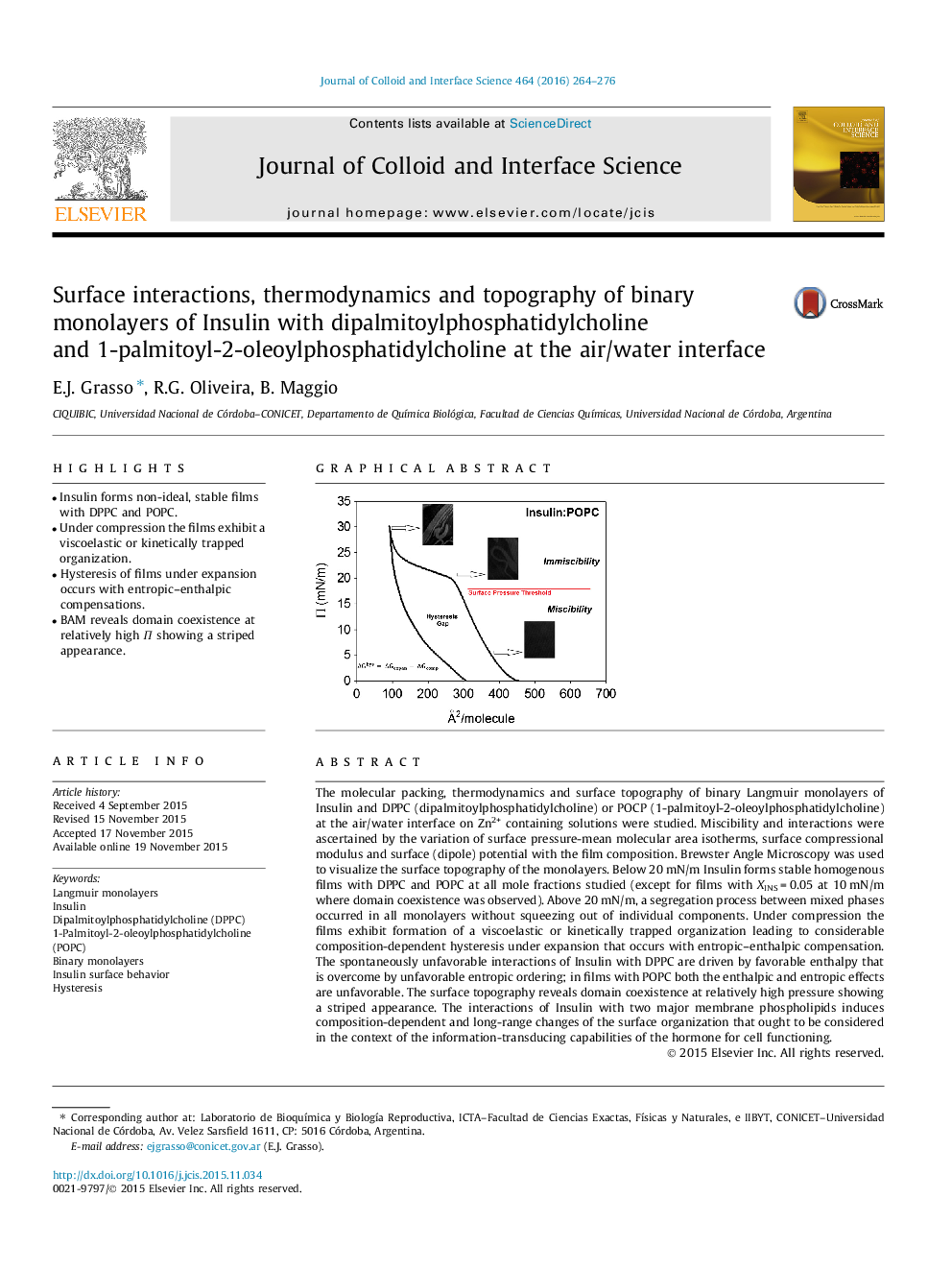| Article ID | Journal | Published Year | Pages | File Type |
|---|---|---|---|---|
| 606444 | Journal of Colloid and Interface Science | 2016 | 13 Pages |
•Insulin forms non-ideal, stable films with DPPC and POPC.•Under compression the films exhibit a viscoelastic or kinetically trapped organization.•Hysteresis of films under expansion occurs with entropic–enthalpic compensations.•BAM reveals domain coexistence at relatively high Π showing a striped appearance.
The molecular packing, thermodynamics and surface topography of binary Langmuir monolayers of Insulin and DPPC (dipalmitoylphosphatidylcholine) or POCP (1-palmitoyl-2-oleoylphosphatidylcholine) at the air/water interface on Zn2+ containing solutions were studied. Miscibility and interactions were ascertained by the variation of surface pressure-mean molecular area isotherms, surface compressional modulus and surface (dipole) potential with the film composition. Brewster Angle Microscopy was used to visualize the surface topography of the monolayers. Below 20 mN/m Insulin forms stable homogenous films with DPPC and POPC at all mole fractions studied (except for films with XINS = 0.05 at 10 mN/m where domain coexistence was observed). Above 20 mN/m, a segregation process between mixed phases occurred in all monolayers without squeezing out of individual components. Under compression the films exhibit formation of a viscoelastic or kinetically trapped organization leading to considerable composition-dependent hysteresis under expansion that occurs with entropic–enthalpic compensation. The spontaneously unfavorable interactions of Insulin with DPPC are driven by favorable enthalpy that is overcome by unfavorable entropic ordering; in films with POPC both the enthalpic and entropic effects are unfavorable. The surface topography reveals domain coexistence at relatively high pressure showing a striped appearance. The interactions of Insulin with two major membrane phospholipids induces composition-dependent and long-range changes of the surface organization that ought to be considered in the context of the information-transducing capabilities of the hormone for cell functioning.
Graphical abstractFigure optionsDownload full-size imageDownload high-quality image (48 K)Download as PowerPoint slide
